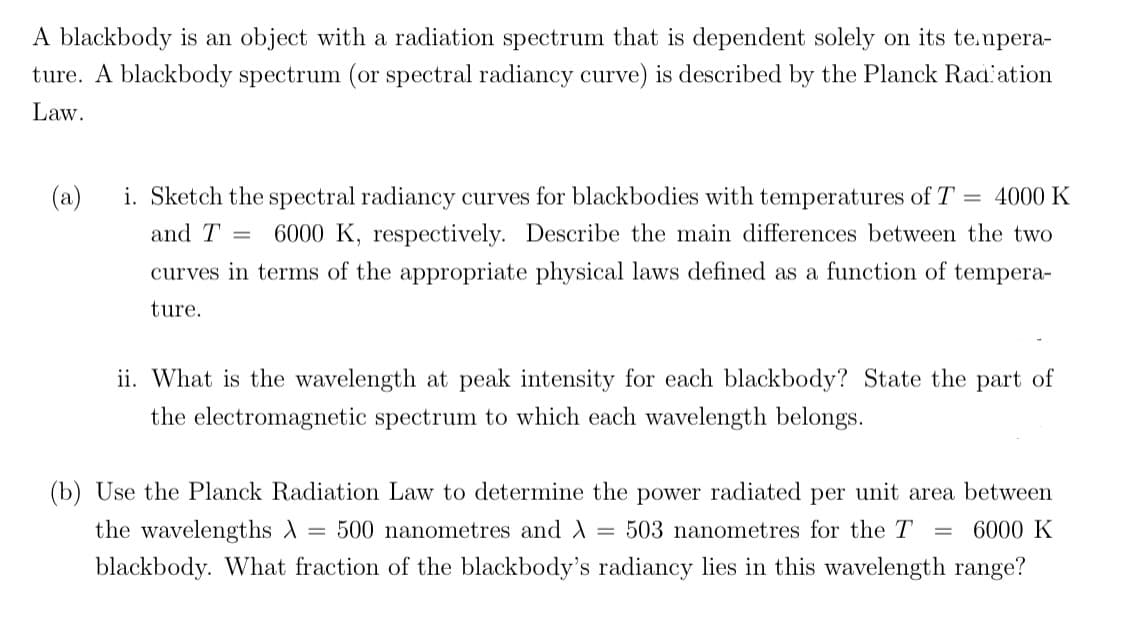A blackbody is an object with a radiation spectrum that is dependent solely on its tempera- ture. A blackbody spectrum (or spectral radiancy curve) is described by the Planck Radiation Law. (a) i. Sketch the spectral radiancy curves for blackbodies with temperatures of T = 4000 K and T = 6000 K, respectively. Describe the main differences between the two curves in terms of the appropriate physical laws defined as a function of tempera- ture. ii. What is the wavelength at peak intensity for each blackbody? State the part of the electromagnetic spectrum to which each wavelength belongs.
A blackbody is an object with a radiation spectrum that is dependent solely on its tempera- ture. A blackbody spectrum (or spectral radiancy curve) is described by the Planck Radiation Law. (a) i. Sketch the spectral radiancy curves for blackbodies with temperatures of T = 4000 K and T = 6000 K, respectively. Describe the main differences between the two curves in terms of the appropriate physical laws defined as a function of tempera- ture. ii. What is the wavelength at peak intensity for each blackbody? State the part of the electromagnetic spectrum to which each wavelength belongs.
Related questions
Question

Transcribed Image Text:A blackbody is an object with a radiation spectrum that is dependent solely on its tempera-
ture. A blackbody spectrum (or spectral radiancy curve) is described by the Planck Radiation
Law.
(a)
i. Sketch the spectral radiancy curves for blackbodies with temperatures of T = 4000 K
and T = 6000 K, respectively. Describe the main differences between the two
curves in terms of the appropriate physical laws defined as a function of tempera-
ture.
ii. What is the wavelength at peak intensity for each blackbody? State the part of
the electromagnetic spectrum to which each wavelength belongs.
(b) Use the Planck Radiation Law to determine the power radiated per unit area between
the wavelengths A 500 nanometres and λ = 503 nanometres for the T 6000 K
blackbody. What fraction of the blackbody's radiancy lies in this wavelength range?
=
Expert Solution
This question has been solved!
Explore an expertly crafted, step-by-step solution for a thorough understanding of key concepts.
Step by step
Solved in 3 steps with 3 images
